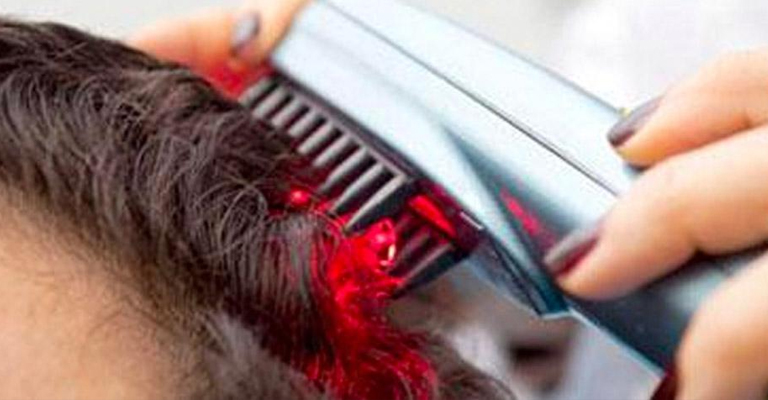Low-Light Laser Therapy (LLLT), also known as red light therapy, is among the current emerging trends in treating hair loss. The technique is quickly garnering momentum, and there is a lot of hype around it. But there are many verdicts about its efficacy. Hence, this publication will look at what LLLT is, how effective it is, and what to expect from it.
Stimulating Hair Growth to Counter Hair Loss
LLLT is a treatment method for hair loss that uses low-level lasers or light-emitting diodes (LEDs) to stimulate hair growth. It is often combined with other hair loss treatments, such as medications or hair transplants, and is considered a non-invasive, safe, and effective method for treating hair loss.
Here’s How It Works
The laser light produced by the device employed in the LLLT procedure has a specific wavelength. It can only be absorbed by the organic molecules in the hair follicles. The exposure to light emitted by the diodes in the LLLT setup transitions the hair follicles into the development stage. As the light permeates the scalp, it activates the stem cells in charge of regenerating new hair follicles and promotes hair growth. The LLLT procedure increases the pace of hair growth by ramping up the metabolism of the cells and facilitating the creation of Adenosine Triphosphate (ATP), a molecule that provides energy to drive the metabolic processes in the hair follicles.
The light therapy also increases blood flow in the area of the scalp that is being treated, which increases the delivery of nutrients and oxygen to the hair follicles and encourages the growth of longer and thicker hair. As a result, the hair appears fuller overall and has thicker hair shafts.
Breaking Down the Expectations
When it comes to treating thinner, weaker hair follicles, LLLT is highly effective. It has been demonstrated to support thicker, stronger, and healthier hair growth and can significantly enhance the appearance and volume of the hair. In several studies, LLLT assisted 85% of patients receiving treatment to slow down or even stop hair loss. In 55% of the cases, patients also noticed new hair growth.
In patients who have been bald for a long time, LLLT is ineffective. This is because there are no hair follicles to stimulate, in the scalp of such patients. LLLT cannot restore hair growth in areas of the scalp where there has been no hair growth.
LLLT is used predominantly in patients with partial hair loss or the early phases of hair loss. When combined with additional treatments involving medications such as minoxidil, it is known to yield better results, usually showing after a month or two of initiating the treatment.
Once you start treatment, results typically first begin to appear after two months and continue to improve gradually. If treatment is interrupted, the hair loss will appear again, returning the scalp to the initial state. LLLT only works as long as the treatment is consistent.
So What Exactly Is the Excitement About?
The hype surrounding LLLT for hair loss is due to the numerous clinical studies and case reports that have shown positive results. Some studies have reported an increase in hair thickness and density, as well as an improvement in overall hair health. In addition, many people have reported positive results from using LLLT for hair loss, which has contributed to the growing popularity of the therapy.
However, the reality is that LLLT is not a cure-all for hair loss. While it has shown promise in clinical studies, the results have not been consistent and there is still much to be learned about the therapy. In addition, LLLT is not suitable for everyone, and it may not work for everyone.
Shortcomings to Watchout for
The therapy is best suited for people with androgenetic alopecia (AGA), a type of hair loss caused by genetics and hormones. It may not be effective for people with other types of hair loss, such as alopecia areata, a type of autoimmune hair loss.
Another limitation of LLLT is that it can be time-consuming and expensive. The therapy usually requires multiple sessions, and it can take several months to see results. In addition, the cost of LLLT can be prohibitive for some people, especially since it is not covered by insurance.
Talk to one of our consultants today to learn more about how LLLT can help you restore scalp hair growth. We will give you a detailed account of its relevance to your condition and a future course of action.
Fill up the consultation form to start your journey towards overcoming hair loss today!
